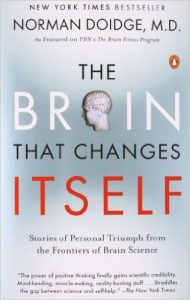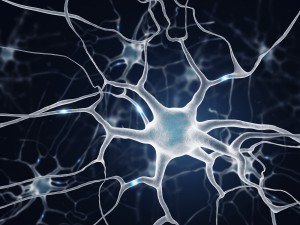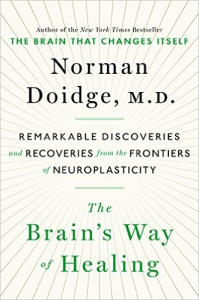Carbon – Silicon – Plastic
Posted: September 1, 2015 Written by: W.B. “Bud” Kirchner.
 I have previously, introduced the concept of the superiority of carbon over silicon. Now to push things further, let’s look at plastic – or more accurately “plasticity.”
I have previously, introduced the concept of the superiority of carbon over silicon. Now to push things further, let’s look at plastic – or more accurately “plasticity.”
Having read and discussed much on this topic with several individuals in the know, I would refer interested parties to:
There are (of course) lots of other sources but the above are well written (for general audiences) and full of relevant examples vs. obtuse theory.
Quick disclaimer: I need to declare a personal interest/bias. I believe brain plasticity is inherent in the success of multisensory environments (Snoezelen), which are the primary component of one of our philanthropic initiatives, (www.cdhaf.org) the Christopher Douglas Hidden Angel Foundation.
In summary, Doidge and others have assembled ample evidence of the brains ability to heal, preserve itself, and improve its functioning. In one of the most telling summaries: it is now clear that our brains, like our bodies, are far more likely to waste away from underuse than to wear down from overuse.
 Plasticity is arguably the most encouraging aspect of neuroscience since it comforts us – it tells us we can recover from injury and we can master new skills!
Plasticity is arguably the most encouraging aspect of neuroscience since it comforts us – it tells us we can recover from injury and we can master new skills!
Given early thinking about the brains ‘cast in stone’ nature (based largely on its complexity) some of the new concepts are mind blowing (pun intended).
For example: Thoughts can switch our genes on, thus altering our brain structure (and function?). In other words a brain can change its own structure and function. Lest you think I am exaggerating the New York Times described the work reflected in Doidge’s first book as “mind-bending, miracle-making, reality-busting stuff.”
There are a number of contexts where plasticity is relevant to our Business Brain Model℠ given that the brain (in conjunction with the body) is the muscle with which we compete:
- Peak performance
- Can you master a new skill?
- Can you improve?
- Injury recovery
- Disease
- Trauma
- Aging delay
- After all the years invested in mastering skills – do we need to watch them wither away – prematurely?
So – with all these benefits in mind, you, the (above) average business leader, must ask the inevitable question: How do I add plastic(ity) to my (essential) carbon and (optional) silicon based life?
The answer is simple: exercise – both physical and mental.
Let’s look at them separately, although elsewhere I do argue the mind and body are inseparable – especially in a mentally and physically challenging environment like business.
Here are a few things to consider when your CBA (cost business analysis) suggests you either miss your gym time or adjust your business day.
On the body side it is, for all practical purposes, about aerobic exercise. The recommended level varies but even in the context of driven business leaders/builders it is not much (3-5 hours/week). But as with most things (speaking practically not philosophically) more is better. Take comfort though that anything is better than nothing.
 On the mental side, the jury is still out on the various mind training games. Psychologists say specific games help memory and problem solving while scientists say specific games are too, well, specific. Social interaction is proven to exercise the entire brain. I am a huge proponent of sensory stimulation such as light, vibration and motor. And I must say essentially anything sending signals across neural networks: today’s mantra is “neurons that fire together wire together.”
On the mental side, the jury is still out on the various mind training games. Psychologists say specific games help memory and problem solving while scientists say specific games are too, well, specific. Social interaction is proven to exercise the entire brain. I am a huge proponent of sensory stimulation such as light, vibration and motor. And I must say essentially anything sending signals across neural networks: today’s mantra is “neurons that fire together wire together.”What’s the tradeoff for your precious time?
- Production of new neurons and new connections between them
- Production of nerve growth factor
- Increase in neurotransmitters
- Formation of new blood vessels
- Production of a ‘fertilizer’ for the neurons – brain derived neurotrophic factor
“The chief function of the body is to carry the brain around.” ~ Thomas A. EdisonJust to repeat my earlier caveat (and disagree with Mr. Edison): body and brain evolved so they could act symbiotically.
In writing this I have tried to find the right altitude – not buried in the weeds or at distorted view of 30,000 feet. With a bit of encouragement I would be happy to go into more detail. Clearly, we can’t be promoting our Business Brain Model without discussion on how to improve the brain.
About the Author: W.B. “Bud” Kirchner is a serial entrepreneur and philanthropist with more than 50 years of business success. He is not a scientist or an academic but he does have a diversified exposure to neuroscience, psychology and related areas. Generally speaking, the ideas he expresses here are business-angled expansions of other people’s ideas, so when possible, he will link to the original reference.

